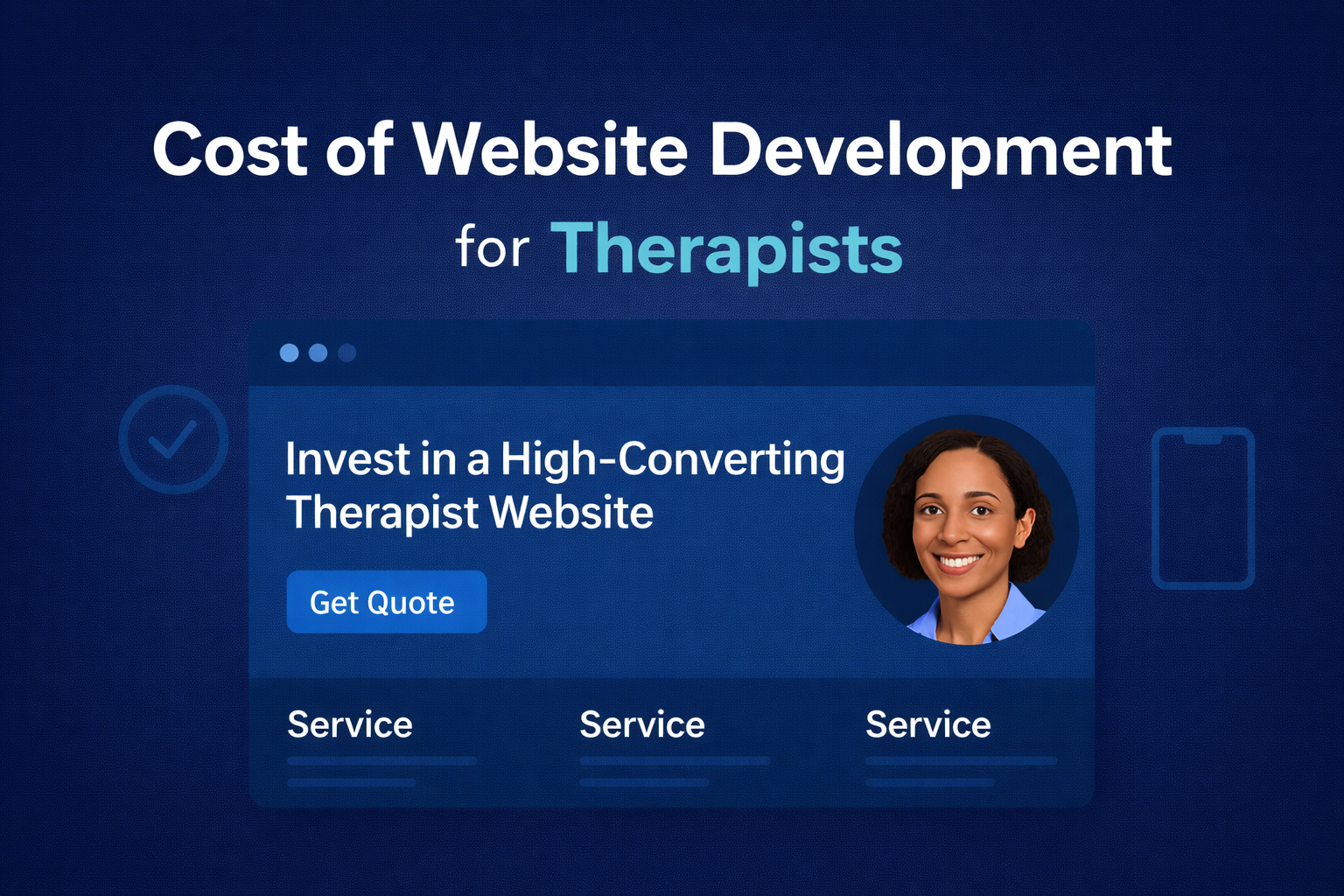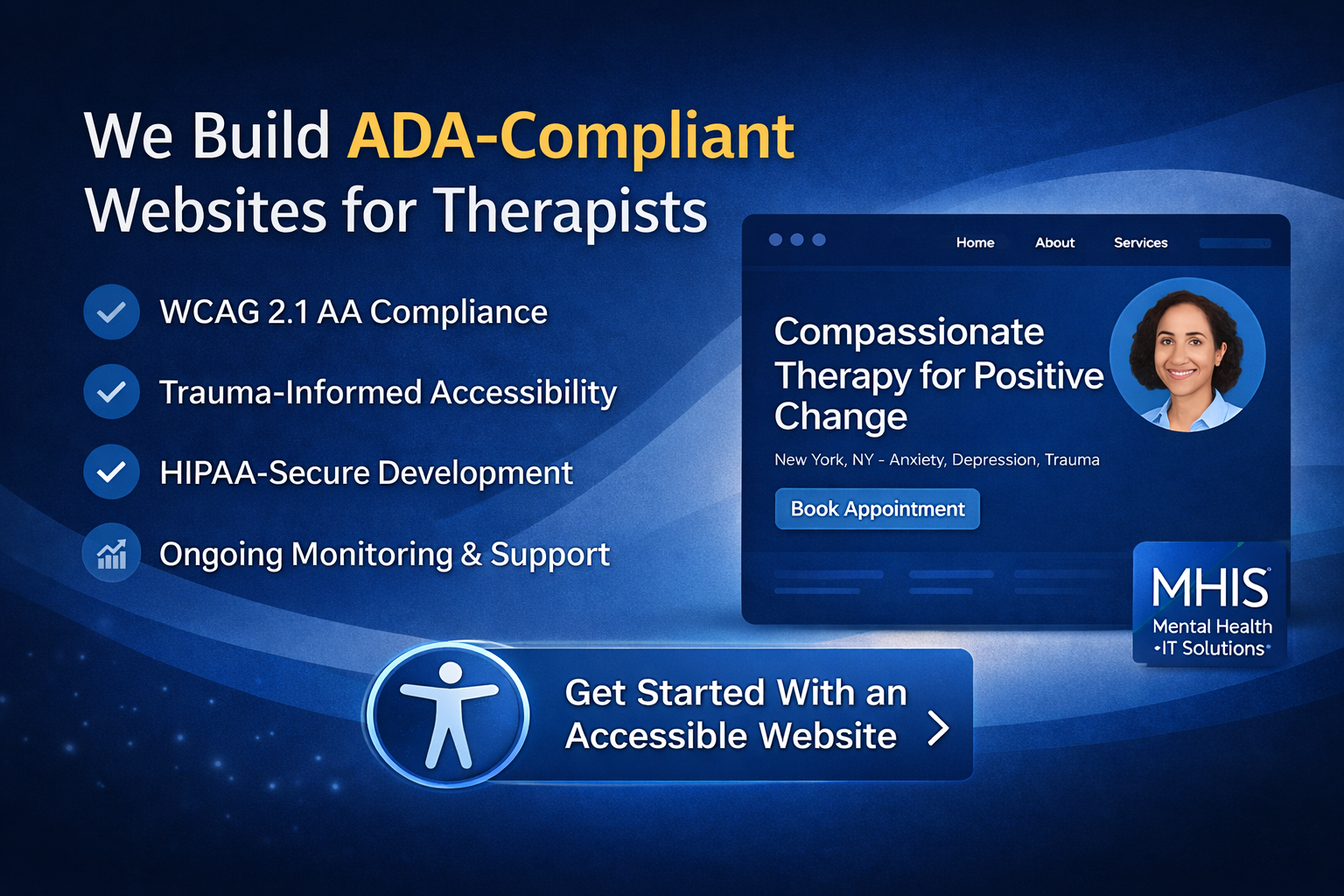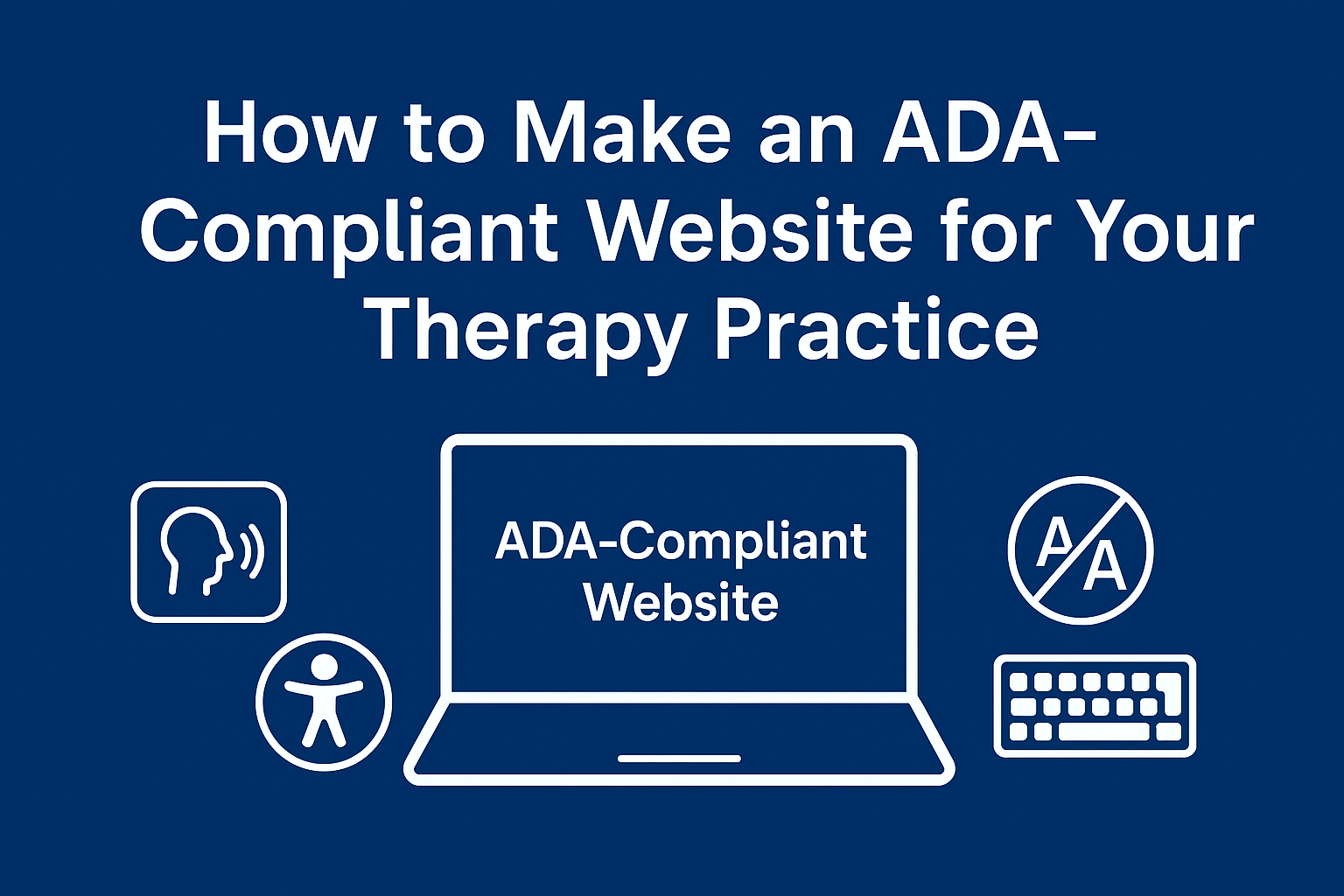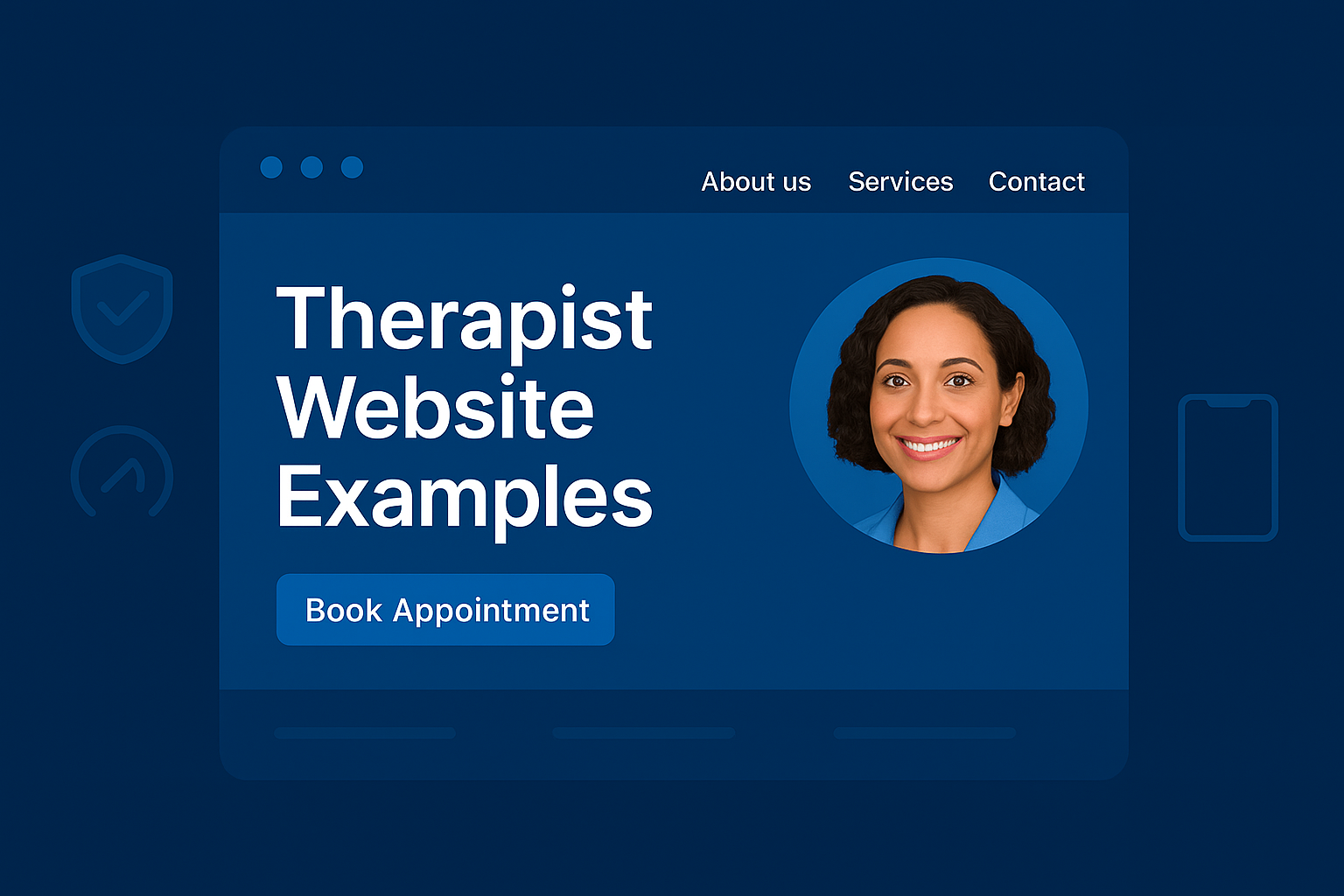Introduction
If you’re running a private therapy practice, you’ve likely asked:
- “Do I need to worry about HIPAA compliance on my website?”
- “What features does a HIPAA-compliant website need?”
- “Is it okay to use contact forms or chatbots on my therapy site?”
In 2025, HIPAA compliance isn’t optional — especially if your website collects any information from potential or existing clients.
Let’s break down what makes a therapist website HIPAA-compliant and how to ensure your digital presence protects both your clients and your practice.
1. What Is HIPAA Compliance in Web Design?
HIPAA (Health Insurance Portability and Accountability Act) requires all healthcare providers — including mental health professionals — to protect Protected Health Information (PHI).
That includes:
- Contact form submissions with names, emails, symptoms, or appointment requests
- Live chat messages
- Intake forms or newsletter opt-ins
- Any identifying data linked to mental health care
If your website collects it, it must protect it.
📌 Start here: Build a HIPAA-Compliant Teletherapy Website
2. Use a Secure, HIPAA-Compliant Contact Form
Standard WordPress or Wix forms are not HIPAA-compliant. You need:
- Encrypted data transmission (SSL)
- Encrypted storage (or no storage at all)
- Business Associate Agreement (BAA) from the form provider
✅ Recommended tools:
- Hushmail for Healthcare
- JotForm HIPAA Plan
- IntakeQ
📌 More Info: Top LMFT Digital Tools to Streamline Practice
3. Ensure SSL Encryption (HTTPS)
All therapy websites must have an SSL certificate — indicated by the “https://” in the URL and the padlock icon in the browser.
Without it, data can be intercepted — and Google will flag your site as “Not Secure.”
✅ MHIS ensures all hosted therapist sites include full SSL coverage.
📌 Explore Services: Mental Health IT Solutions
4. Never Use Unencrypted Live Chat Widgets
Standard chat tools like Tidio, Facebook Messenger, or Drift are not HIPAA compliant.
Only use chat widgets that:
- Encrypt all messages
- Store no PHI
- Offer a BAA
- Auto-delete conversations (if applicable)
✅ Options include:
- ApexChat for Healthcare
- HIPAAChat
- SimplePractice Messaging
📌 Related Article: Teletherapy Website Features
5. Host on a HIPAA-Compliant Server (If You Store PHI)
If your website stores PHI (even temporarily), the server must also be HIPAA-compliant.
That means:
- Secure access controls
- Firewall protection
- Encryption at rest
- Signed BAA from your hosting provider
✅ MHIS offers HIPAA-ready hosting as part of our website development packages.
📌 Get Started: Custom-Built Teletherapy Website
6. Add a Clear Privacy Policy and Disclaimer
Transparency is key. Your website should include:
- A privacy policy that explains how you collect, use, and protect data
- A HIPAA compliance statement (especially for contact forms or online intake)
- Disclaimers for any non-clinical content (e.g., blogs)
📌 Best Practices: Teletherapy Website Security Features
7. Avoid Collecting Unnecessary PHI
You only need a name and email for most contact requests. Don’t ask about symptoms, medications, or detailed histories unless:
- You’re using a HIPAA-compliant form
- The form is encrypted and secured
- You’ve signed a BAA with the provider
Less data collected = less compliance risk.
📌 Security Insight: Ensuring HIPAA Compliance in Teletherapy
Final Thoughts
HIPAA compliance isn’t just a legal requirement — it’s a signal to your clients that you take their privacy seriously.
At Mental Health IT Solutions, we specialize in building secure, HIPAA-compliant therapy websites that:
✅ Protect PHI
✅ Include the right legal protections
✅ Are voice search and SEO optimized
✅ Convert visitors into clients






